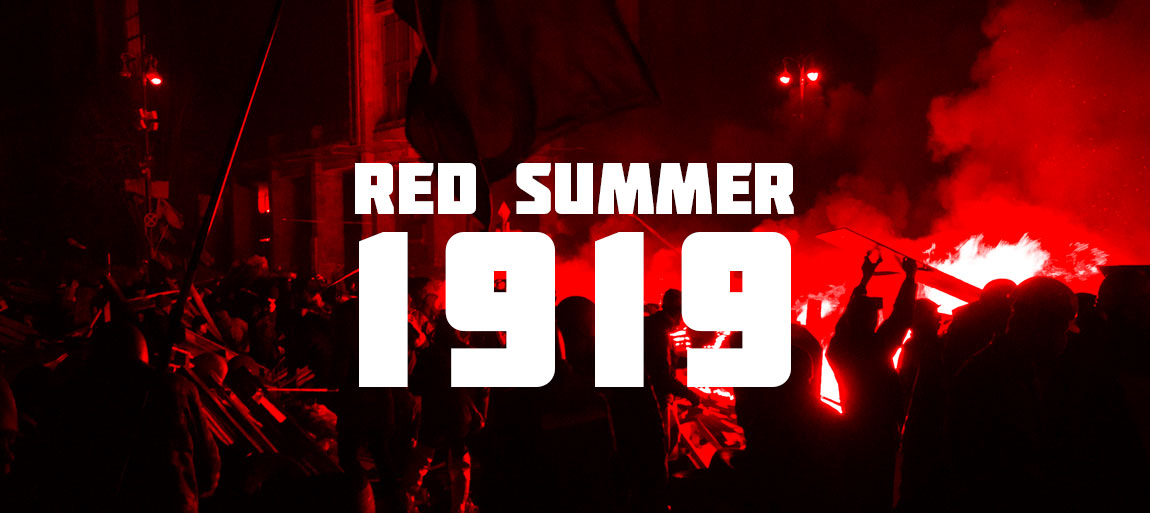
Never Forget “RED SUMMER 1919”
The “Red Summer” of 1919 was a time of widespread racial unrest, rioting, and civic unrest that hit several American cities to the core.



The “Red Summer” of 1919 was a time of widespread racial unrest, rioting, and civic unrest that hit several American cities to the core.
Bloody Summer 1919: The American Genocide That Many Forgot
When it came to American history, 1919 was a turbulent year. After the end of World War I, the country was undergoing profound political and social upheaval. In the midst of this, national racial tensions flared up, leading to a bloody summer that became known as the “Red Summer.” Examining the origins, major events, and enduring effects of Red Summer 1919, this article delves into this often-overlooked period in American history.
The “Red Summer” of 1919 was a time of widespread racial unrest, rioting, and civic unrest that hit several American cities to the core. Conflicts between white and black populations were common during this time, and the resulting racial tensions were severe. Because blood washed over various cities during this time, the phrase “Red Summer” was born.
What Brought About the Racial Conflicts
The racial tensions that reached a boiling point in the summer of 1919 were caused by many factors:
Thousands of African American troops who had served their nation overseas returned home at the conclusion of World War I. Their experiences with racism and discrimination at home and in the service had shaped their expectations of civil rights and equality upon their return.
Massive African-Americans were making their way northward from the rural South during what is known as the Great Migration. Racial tensions rose as a result of this migration’s impact on Northern cities’ job and housing markets.
Many white workers harbored animosity and anger toward African American migrants because they saw them as a threat to their employment opportunities. Racial tensions were intensified by labor struggles and economic instability.
The years leading up to 1919 saw a string of racial riots in the South, which served as a model for future acts of violence. Racist tensions rose as a result of these events.
Most Important Events from Red Summer 1919
In the summer of 1919, racial tensions rose to dangerous levels in a number of American cities. Among the most noteworthy occurrences are these:
Illinois, USA: In July of 1919, while on a segregated beach, white beachgoers stoned and drowned a Black youngster named Eugene Williams, sparking the Chicago Race Riot. As a consequence of this occurrence, white and black communities clashed and violently reacted, leading to casualties and property damage.
In July 1919, a white mob attacked a Black man in Washington, D.C., after he was accused of attacking a white woman. This led to an eruption of racial tensions in the nation’s capital. Rioting broke out as a result of the violence and continued for many days, killing and injuring many.
One of the worst racial battles in American history took place in Elaine, Arkansas, in September 1919, known as the Elaine Massacre. White officials and mobs violently repressed African American sharecroppers’ efforts to improve working conditions and wages. Many white people and many African Americans lost their lives as a result of the violence.
A white mob stormed the home of Black man Will Brown in September 1919 in Omaha, Nebraska, after he was accused of attacking a white woman. This incident started the Omaha Race Riot. After lynching Brown, the crowd set fire to his corpse in the streets. Afterwards, the bloodshed extended around the city, causing casualties and destruction of property.
The arrest of a Black man on charges of assaulting a white woman in August 1919 led to a racially charged outbreak in Knoxville, Tennessee. Victims and property of the city’s Black community were wreaked by a white mob’s assault.
In May of 1919, violence broke out in Charleston, South Carolina, during a strike by Black longshoremen. Black locals were the targets of white sailors and laborers, who caused injuries and fatalities.
In July 1919, racial tensions in Longview, Texas, reached a boiling point as Black employees sought to form a union. There was bloodshed and injury among Black people when white citizens and police officers attacked them.
The Black community in Norfolk, Virginia, was the target of white mob violence in July 1919, heightening racial tensions in the city. People were hurt or killed as a result of the fighting.
Despite not being a part of the Red Summer, the Tulsa Race Massacre of 1921 deserves consideration in relation to Tulsa, Oklahoma. It happened when a group of white people stormed the affluent Black neighborhood of Greenwood, which is sometimes called “Black Wall Street.” Deaths and extensive damage were results of the fighting.
Racial tensions and violence erupted in many of these cities and villages during the Red Summer of 1919. Civil rights and racial equality activists still feel the effects of that summer’s events, which mirrored the country’s underlying racial tensions and divides.
Consequences of 1919 Red Summer
There were far-reaching effects of Red Summer 1919 on the civil rights movement and the fight for racial equality in the US, affecting white and black communities alike:
Deaths and Injuries: Red Summer was responsible for hundreds of deaths, thousands of injuries, and extensive property damage. Communities hit hard felt the social and economic effects.
Democracy’s Scandalous Promises: Red Summer’s bloodshed highlighted the chasm that exists between democratic ideals and the reality of racial injustice in the United States. The idea that Black veterans would be treated fairly upon their return from World War I was shattered by it.
A Call to Action: The events of Red Summer inspired civil rights groups and individuals to redouble their efforts in the battle against racism. The violence highlighted how critical it is to tackle systematic racism immediately.
Racial Violence and Discrimination Became More Publicly Concerned: American and worldwide media coverage of the Red Summer events catapulted the problem of racial violence and discrimination into the spotlight. They started people talking about and arguing about racial inequalities.
Reactions in the Law and in Congress: After Red Summer, anti-lynching legislation was more heavily pushed, although it was met with strong resistance in Congress. Additionally, the violence shaped the thinking of pioneers in the civil rights movement and paved the way for subsequent campaigns and legislation.
Remnants of the 1919 Red Summer
Red Summer has frequently been disregarded in the larger American historical narrative, despite the fact that it is historically significant. A resurgence of interest in remembering and honoring the 1919 events, however, has occurred in recent years. Among the many important things that Red Summer left behind are:
Acknowledgment of the Past: Oral history initiatives, museum displays, and academic study have all contributed to the documentation and preservation of Red Summer’s past. In order to keep the events in people’s minds, this acknowledgment is vital.
Efforts in Education: Red Summer is currently taught in many schools, making sure that kids understand about this significant period in American history.
The third piece of the puzzle is memorials and commemorations, which groups and communities have put together to remember the Red Summer casualties and to start a conversation about racial equality and healing.
Red Summer has sparked conversations on racial reconciliation and the importance of ongoing fights against structural racism and injustice, which brings us to our fourth point: reconciliation initiatives.
Activists and groups fighting for racial equality and justice draw inspiration from the events of Red Summer, which have continued to motivate them. They are symbols of the continuous fight for civil rights in the United States.
In summary
Racial tensions, rioting, and extensive carnage characterized the bloody Red Summer of 1919 in the United States. The racial inequities and inequalities that still existed in America were exposed by the events of that summer. A somber and sometimes disregarded part of our nation’s past, Red Summer still stands as a powerful symbol of the never-ending fight for racial fairness and equality. It is crucial that we recognize and honor this era if we are to work together to create a more just and inclusive society, one in which we can learn from our mistakes and go forward with hope.

